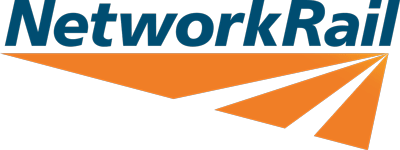Tuesday 11 Mar 2025
Time capsule buried over 40 years ago near Selby restored for future generations
- Region & Route:
- Eastern
- | Eastern: East Coast
Network Rail has worked with the Railway Heritage Trust (RHT) to restore the site of a time capsule at Hambleton, near Selby.
Today, teams from Network Rail, RHT and former British Rail colleagues unveiled a newly restored commemorative stone marking the Selby railway diversion.
The special ceremony, which took place at the original site of the stone, celebrated a significant milestone in British railway history – by recreating the unveiling event 45 years ago.
The time capsule was buried in July 1980 by British Rail general manager Frank Paterson and rail industry colleagues to mark the construction of the Selby Diversion on the East Coast Main Line (ECML), which was Britain’s first new build high speed line.
Inspirational Frank, now 95, did the unveiling honours again today, and spent time with T-Level students – giving them tips and advice from his remarkable 40-year career as they begin their own journeys.
Network Rail colleagues collaborated with the RHT to clear and restore the site where the capsule is buried – following decades of woodland growing around it – with the completion coinciding with this year's Railway 200 celebrations.
This has included de-vegetation work, the installation of a new fence, cleaning of the stone, a replacement for the 1980 plaque and additional new plaque. The work was jointly funded by Network Rail and a grant from the RHT to support these improvements.
The stone has also been designated by the Railway Heritage Designation Advisory Board, meaning it was selected for preservation because it symbolises an important part of railway history.
The Selby Diversion was created to route around the Selby coalfield which had plans to reopen. There were concerns that reopening the coalfield would potentially lead to subsidence and speed restrictions on the ECML.
As a result, British Rail decided to build a new stretch of railway and divert the ECML around the coalfield. This route starts at Colton Junction, south of York, and ends at Temple Hirst Junction near Selby, and is still used by hundreds of passenger and freight services a day.
Helen Cavanagh, head of passenger experience for Network Rail’s East Coast route, said: “It has been great to work with the Railway Heritage Trust to restore this piece of railway history and mark such a significant part of the East Coast Main Line story.”
“Next time you are travelling between York and Doncaster, make sure you look out for the time capsule site!”
Frank Paterson, who now chairs the Friends of the National Railway Museum, said: “When I was general manager for British Rail in its Eastern region it was a momentous occasion to bury this time capsule following many years of hard work to a create a 14-mile stretch of purpose-built high-speed line for Britain’s changing railway.
“Forty-five years on, it’s wonderful to see the site restored back to its former glory and I am grateful for the work Network Rail has carried out, supported by the Railway Heritage Trust.”
Tim Hedley-Jones, director of the Railway Heritage Trust, said: “The Railway Heritage Trust is pleased to support Network Rail in this restoration work so that people can once again see the site of the commemorative stone from passing trains.
“The recent history of the railways is just as important as its earlier history, and it is good to celebrate the site of the birth of high-speed rail in this country.”
When the time capsule site was first constructed, it could be seen by passengers on passing trains, however, years of vegetation made this difficult. The improvement work allows for passengers to see the site once more – nearly half a century after it was installed.
Contact information
Passengers / community members
Network Rail national helpline
03457 11 41 41
Latest travel advice
Please visit National Rail Enquiries
Journalists
Chantele Hodson
Communications Manager
chantele.hodson@networkrail.co.uk
About Network Rail
We own, operate and develop Britain's railway infrastructure; that's 20,000 miles of track, 30,000 bridges, tunnels and viaducts and the thousands of signals, level crossings and stations. We run 20 of the UK's largest stations while all the others, over 2,500, are run by the country's train operating companies.
Usually, there are almost five million journeys made in the UK and over 600 freight trains run on the network. People depend on Britain's railway for their daily commute, to visit friends and loved ones and to get them home safe every day. Our role is to deliver a safe and reliable railway, so we carefully manage and deliver thousands of projects every year that form part of the multi-billion pound Railway Upgrade Plan, to grow and expand the nation's railway network to respond to the tremendous growth and demand the railway has experienced - a doubling of passenger journeys over the past 20 years.
Follow us on Twitter: @networkrail
Visit our online newsroom: www.networkrailmediacentre.co.uk

